
FS-1144 | February 2021
Metamorphosis: The Life Stages of a Monarch Butterfly on Milkweed in North East, Maryland
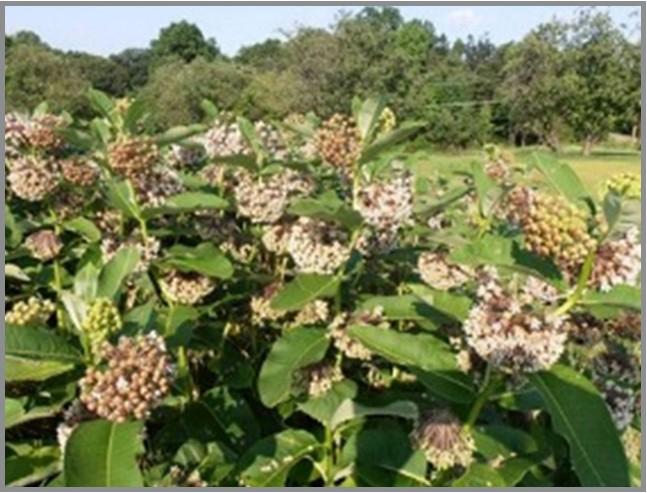
The monarch butterfly develops from an egg to an adult in about 30 days, through four interesting developmental stages, known as complete metamorphosis. The monarch changes from an egg stage, to a larval (caterpillar) stage, to a pupal (chrysalis) stage, and then to an adult stage. The time from one stage to the next can vary based on the temperature.
1) Egg Stage (3-4 days)
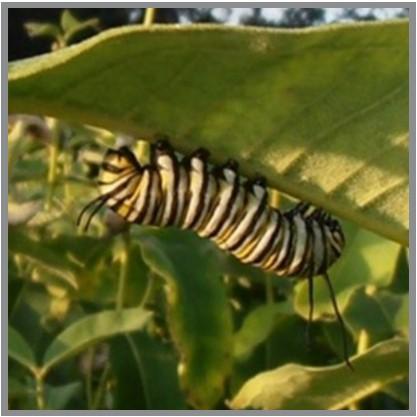
Monarchs usually lay single eggs on the bottom side of a leaf near the top of the plant and it lays many eggs (100 – 300 eggs) throughout its life- time. The photos used in this report are some of the monarch’s metamorphic stages on common milkweed (Asclepias syriaca), as viewed in an outdoor milkweed pollinator garden in North East, Maryland.
The eggs are very small and are not noticed by the naked eye; being unnoticed helps increase their survival rate. Three to four days after an egg is laid, a larva (caterpillar) hatches and eats the egg shell for nourishment then moves to the milkweed leaf and starts to feed almost continuously. Monarch butterfly larva only feed on milkweed plants.
2) Larval Stage (10-14 days)
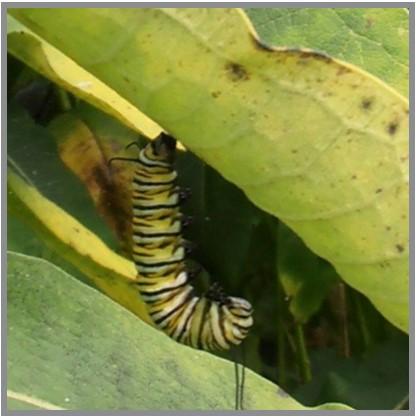
This larval (caterpillar) stage is the stage where the monarch does most of its growing. As the larva continues to grow; it molts its skin so that it can get larger (the intervals between molting are called instars), and this larva goes through 5 instars before it goes into the third or pupal stage.
When the caterpillar is fully grown, it will lay down a silk-like mat and then attach itself to the mat using the hooks located on its hind legs. After the caterpillar has attached itself to the leaf, it hangs upside down in a “J-shape” for about a day.
3) Pupal (chrysalis) Stage (10-14 days)
As the caterpillar sheds its skin for the last time, it passes from the larval stage to the pupal stage. Immediately after the skin is shed, the chrysalis is formed, which is soft, light yellowish-green and it still has caterpillar ripples in it. Within a short period of time, (approximately an hour or so), the chrysalis hardens to become a jade green colored chrysalis that provides a protective shell for the developing butterfly.
During this pupal stage, “magic” happens within the chrysalis. The mouth of the caterpillar undergoes a change from a chewing mouth part of a caterpillar, to a straw-like tongue mouth part of a butterfly for sipping nectar. The crawling caterpillar will soon become a flying butterfly.
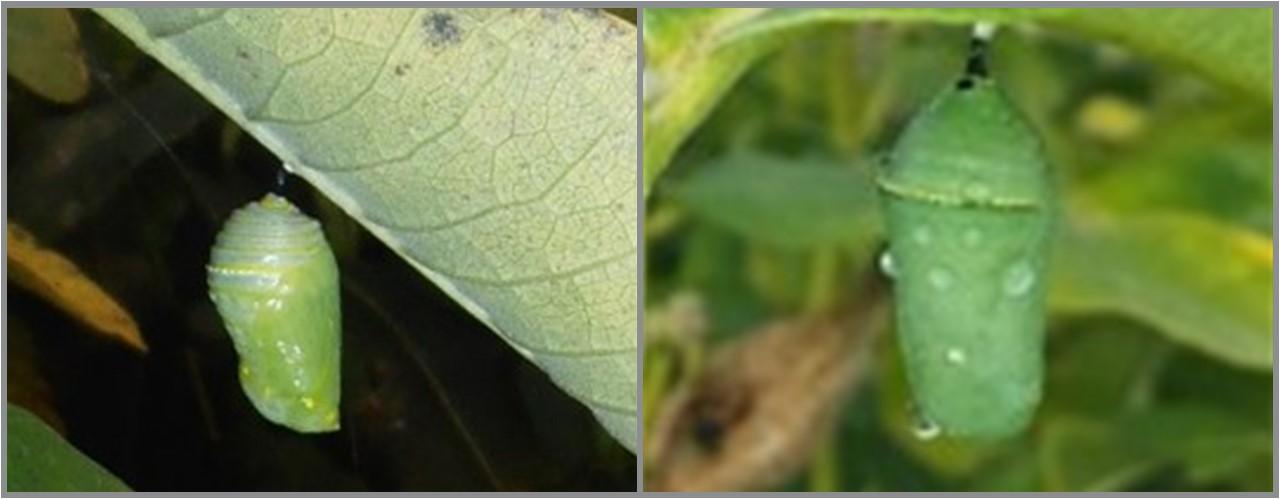
4) Adult Stage
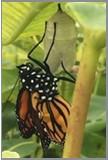
The chrysalis starts to change color just prior to hatching. Once hatched from the chrysalis, the butterfly has crumpled wings that need to dry out before the butterfly can take flight.
The drying process takes about an hour or more. Once this process is complete, the butterfly can fly.
Once the butterfly starts flying, it will search around for food and an appropriate place to start laying its eggs. The butterfly’s life cycle starts again!
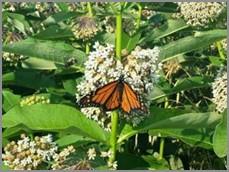
DORIS BEHNKE
dbehnke@umd.edu
This publication, Metamorphosis: The Life Stages of a Monarch Butterfly on Milkweed in North East, Maryland (FS-1144), is a part of a collection produced by the University of Maryland Extension within the College of Agriculture and Natural Resources.
The information presented has met UME peer-review standards, including internal and external technical review. For help accessing this or any UME publication contact: itaccessibility@umd.edu
For more information on this and other topics, visit the University of Maryland Extension website at extension.umd.edu
University programs, activities, and facilities are available to all without regard to race, color, sex, gender identity or expression, sexual orientation, marital status, age, national origin, political affiliation, physical or mental disability, religion, protected veteran status, genetic information, personal appearance, or any other legally protected class.